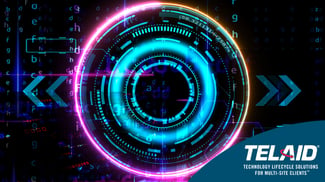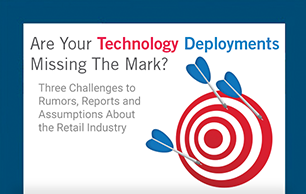 Optical technologies have come a long way over the past two decades and are now evolving at lightspeed thanks to AI, computer vision and edge processing. As the technology becomes smarter, use cases for video are expanding rapidly in industries from retail to manufacturing, healthcare and beyond.
Optical technologies have come a long way over the past two decades and are now evolving at lightspeed thanks to AI, computer vision and edge processing. As the technology becomes smarter, use cases for video are expanding rapidly in industries from retail to manufacturing, healthcare and beyond.
How have recent advancements in optical technologies changed how video is used? Well, edge-based processing and AI have transformed cameras into sensors and sensors into service providers for the user. These sensors deliver information instantaneously, automatically and with few errors. Think about how that differs from traditional video, where hours of footage were captured and then, once an incident occurred, the video was searched manually to identify the precise moment of interest.
Cameras can now capture data with greater accuracy and detail than ever before. With edge-based processing, the cameras themselves become intelligent and can identify video of interest, uploading it to the cloud. The result is much more usable, valuable, accessible information from cameras and with those new benefits, the use of video is exploding across industries and applications.
Here are ten non-traditional use cases for optical technologies that we’ve seen.
- Labor optimization – Video can be used to proactively identify where more labor is needed - either to relieve long customer queues, address production lines that are falling behind, or simply to redirect employees who are not where they should be.
- Trip, slip and fall prevention – The time to know about a problem is before someone trips and falls. Video can help identify if there is an obstacle in the aisle or a spill on the floor so that the obstacle can be removed prior to an accident.
- Customer segmentation – Computer vision can be used to identify groups of individuals by gender, age, race or other criteria to better understand different segment needs and preferences in store.
- Patient safety – In healthcare, new video technologies are being used to detect when patients are in some kind of distress, alerting the nurses’ station to provide immediate response.
- Drive-thru analysis – In QSRs, drive-thrus have often become a bottleneck as traffic patterns suddenly shifted from on-premises dining to drive-thru and curbside. Computer vision can deliver vehicle traffic analysis, capturing critical data like dwell time, queue length, etc.
- Traffic analysis – Video is helpful for evaluating in-store traffic flow including traffic patterns within the store and dwell times at endcaps in order to optimize floor layout.
- Operational accuracy – In the warehouse, video can verify that a particular box of inventory was properly staged for pick-up and that it was loaded onto the correct truck.
- Order accuracy – Cameras now operate with the precision to help verify order accuracy and proactively identify outliers. For example, does the cheeseburger that was ordered actually have cheese on it? Or was the order for a drink with no ice correctly filled?
- Loitering and safety – Video in ATM locations can help prevent homeless as well as hook-and-chain ATM theft by alerting authorities when a car pulls up perpendicular to the ATM.
- Forensic smart search – Collaborating video from disparate cameras to correlate an individual with a license plate with a face, makes detecting potentially dangerous individuals quick and simple.
Hopefully, these use cases will whet your appetite for thinking about how video can support better decision-making in your business. To learn more about this evolving technology and how you can leverage it for your business, listen to the Telaid Tech Connect podcast where I recently spoke with Beth Bergmann. I’m excited to explore new use cases for optical technologies in businesses of all sectors.




